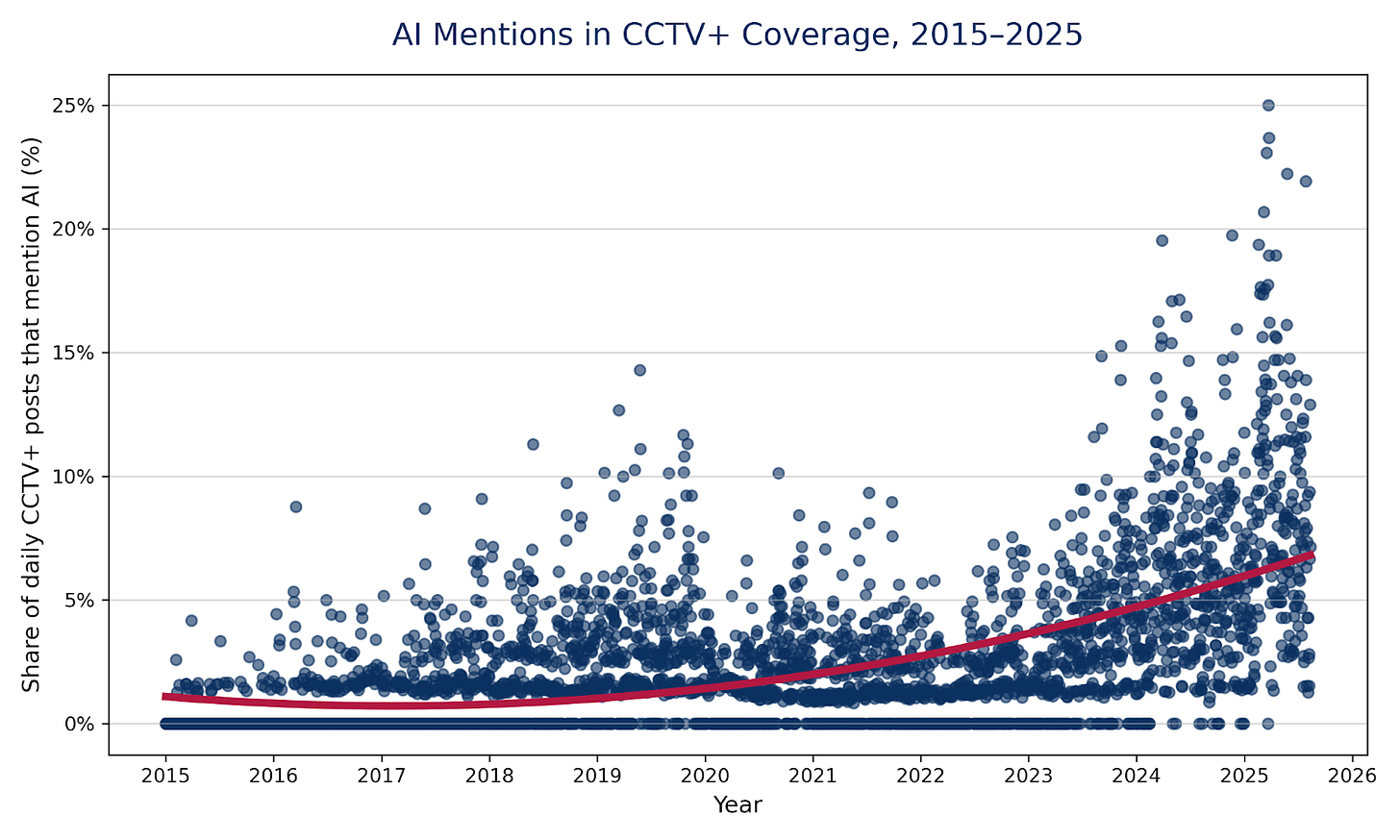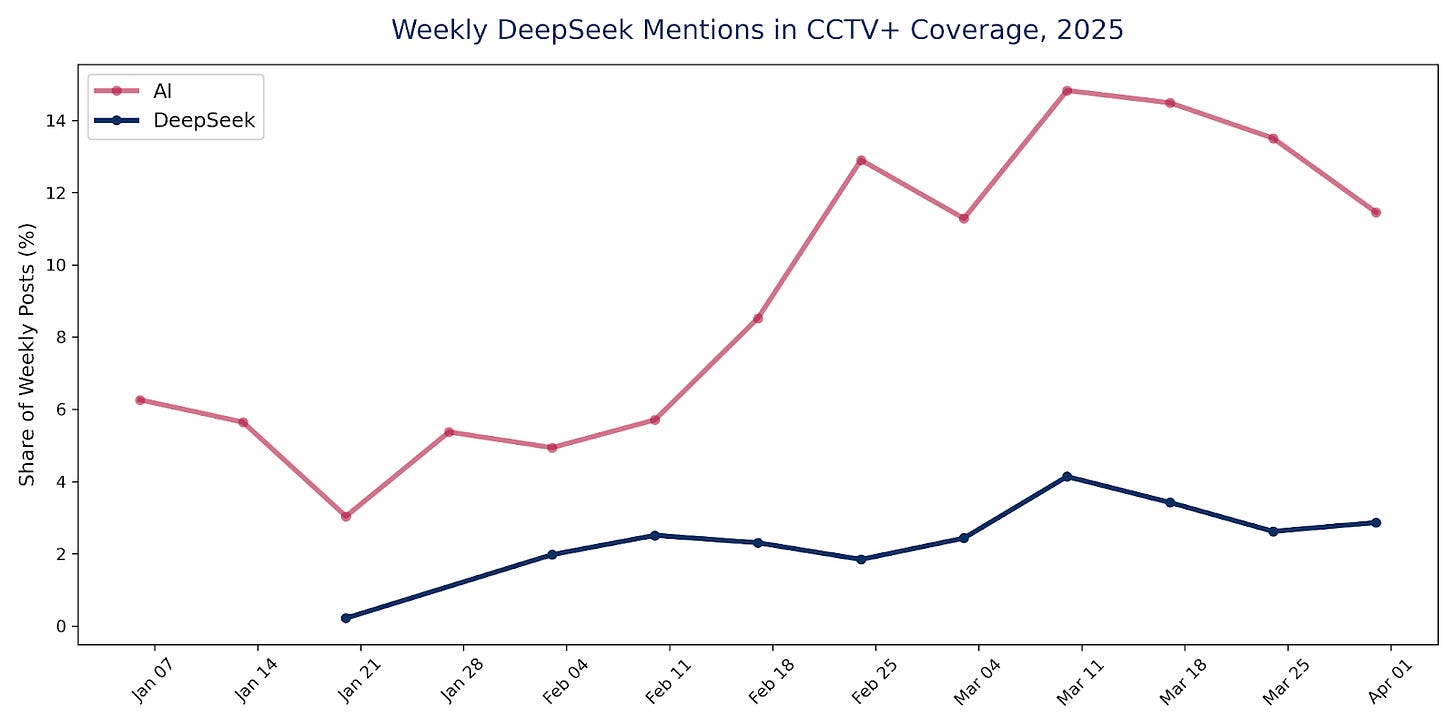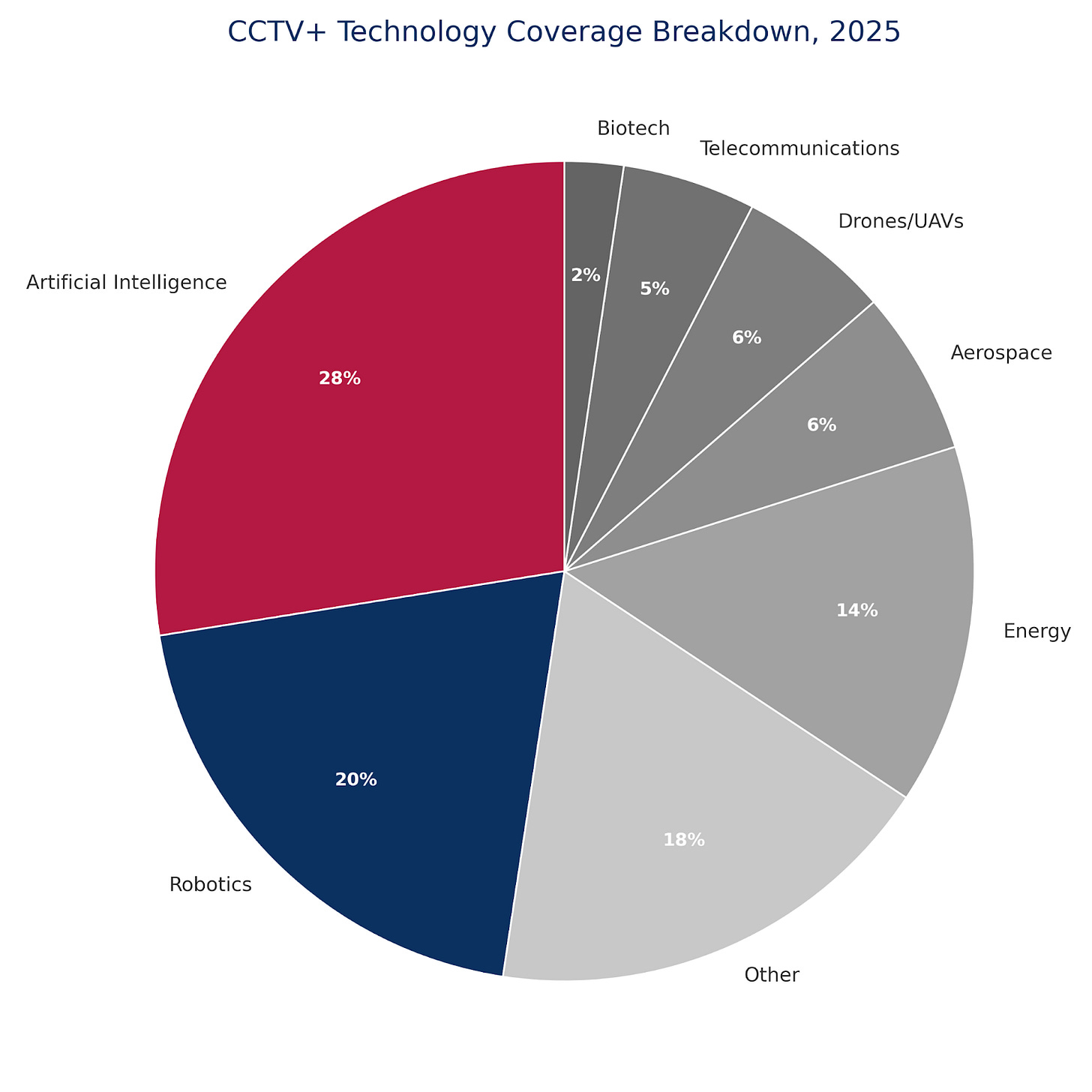I’m Ylli Bajraktari, CEO of the Special Competitive Studies Project. In this edition of our newsletter, Eric Bennett, a Research Assistant on our Future Tech Platforms team, applies a data science lens to examine recent trends in PRC official media coverage of emerging technology.
SCSP’s Exchange takes Austin, Texas!
On September 25th, 2025, SCSP will host the 5th Exchange on Innovation and National Security in Austin, Texas. This is a special one, as it's focused specifically on AI+ Autonomy for national security.
We're continuing our mission to unite pioneering leaders from government, industry, and the scientific community. Our goal? To accelerate collaboration that directly serves U.S. national security. If you've joined us before, you know the caliber of speakers we attract—from past Chairmen of the Joint Chiefs of Staff to CEOs of leading tech and defense organizations. This Austin Exchange promises to be another exceptional gathering.
We'd be honored to have you with us as we dive deep into the future of AI and autonomy. Save the date and register below to secure your spot. We can't wait to see you in Austin!
China in Charts: Reading Between the Lines of Chinese State Media
Understanding the People’s Republic of China’s narrative in the global technological competition is essential to strengthening U.S. competitiveness. By examining patterns in Chinese state media, we can uncover the underlying priorities and ambitions shaping Beijing’s strategic plans. In this newsletter, we analyze trends in emerging technologies by examining CCTV+, an international arm of China's state-run media.
In the context of the global competition for influence, CCTV+ is the People's Republic of China's state-run video news agency tailored specifically for an international audience. It functions as a strategic instrument of the Chinese Communist Party (CCP), designed not for domestic consumption, but to inject state-approved narratives directly into the Western information ecosystem. By providing polished news footage and content in a variety of languages, CCTV+ aims to shape how international media, policymakers, and the public perceive the PRC's positions on a variety of subjects, including technology, economics, and global affairs. Its extensive output is a curated collection of the stories and frames the version of China the CCP wants the world to see, making it a critical data source for understanding and countering Beijing's targeted influence operations. This newsletter analyzes trends over more than 14 years of available CCTV+ coverage, representing 358,366 individual news stories, 10,502 hours of footage, and 110,190,000 words.
AI’s Dominance in State Media Isn’t a Passing Trend

Artificial intelligence is dominating PRC state media coverage of technology. At its peak in March 2025, one in every four of all CCTV+ posts referenced artificial intelligence. Since the beginning of 2025, there has only been one day without a mention of AI. These patterns in coverage align with Beijing’s stated ambitions for integration of artificial intelligence across domains, most notably seen in the 'AI Plus' initiative and the 14th Five‑Year Plan, which explicitly position AI as a strategic driver of industrial upgrading, economic development, and military capability. Peaks in coverage often correspond to key domestic policy announcements, breakthroughs in Chinese AI research, or geopolitical moments when Beijing seeks to signal leadership in technological advancement.
Coverage of DeepSeek's R-1 large language model (LLM) release exemplifies this dynamic. On January 18th, two days before the release of the model, CCTV+ published a post “China doubles down on innovation amid US restrictions on chip exports” The article features experts who highlight that the restrictions on semiconductor chips to China have fostered the creation of innovative methods to circumvent controls. Coverage of this topic was quickly capitalized upon by state media, leading to the largest quantity of AI-related coverage in China to date. This influx in reporting helped to catalyze a wave of Western media coverage. Furthermore, it led to DeepSeek overtaking ChatGPT in the app store on January 27th.

Embodied Intelligence: The Evolving Role of Robotics in China’s Tech Push
While artificial intelligence has dominated CCTV+’s technology coverage in 2025, robotics has consistently taken the second spot, accounting for 20% of all technology-centered posts since the start of the year. CCTV+ posts referencing robotics this year are projected to more than triple the 2020 count. Robotics and artificial intelligence are also often intertwined in the narrative portrayed by CCTV+, with 30% of posts centered on robotics also mentioning artificial intelligence to some degree. This pairing reflects the inherent connection between the two technologies, and China’s broader messaging strategy.

World Robot Conference 2025
One of China’s public facing initiatives for highlighting advances in robotics is the annual World Robot Conference (WRC). The 2025 WRC, which was hosted in Beijing from Aug 8 to 13th, spotlighted recent developments in robotics and embodied AI, showcasing robots in a wide variety of settings; from playing piano, to teams of robots competing in soccer. The event served as both a state media spectacle and an industry gathering, allowing the CCP to present China as a global leader in robot design, manufacturing, and deployment. In the lead-up to the conference, CCTV+ coverage of the event, and robotics generally, rose far above the norm from previous WRCs. Coverage of WRC increased by 54% compared to the 2024 event, and there was an increase in overall robotics coverage of 86% compared to the previous year.
Robotics and artificial intelligence produce innovations that are visible, interactive, and easily integrated into daily life. That visibility makes them powerful propaganda tools, allowing the CCP to connect technological achievement directly to national pride and public excitement. This narrative is further bolstered by China’s position as the global leader in operational industrial robots, with more than seven times the number deployed in the United States as of 2023. By focusing state media attention on these accessible technologies, Beijing ensures its tech narratives resonate with audiences far beyond the laboratory.
Key Takeaways
The story of China’s technological ambitions cannot be fully understood by purely analyzing individual articles and events in isolation, there needs to be some rightsizing of China’s tech ambitions (projected by outlets like CCTV+) versus assessing the ground truth reality and pace of real-world deployments. A single post may highlight the debut of a new large language model or preview the next robotics conference, but by stepping back and tracing the broader pattern of coverage, we begin to discern Beijing’s long-term ambitions. The Deepseek coverage surge was not a coincidence, it was a concentrated effort that led to global coverage. The coverage of the 2025 World Robot Conference was unprecedented, and indicates a growing focus on robotics and embodied AI in China. By mapping these trends across years of state media output, we can move past the surface narrative to uncover the strategic messaging beneath, and better understand how Beijing uses its vast media apparatus to advance both technological and geopolitical objectives.
What’s to Come
Beijing’s recent media trends make clear that advanced technologies such as artificial intelligence and robotics are central to its efforts to take the lead on the world stage. Following the announcement of the AI Plus Initiative on March 12, 2024, CCTV+ has begun to adopt the language of the initiative, with mentions of AI+ in 2025 already surpassing that of 2024. Looking ahead, this focus is poised to persist, with the forthcoming 15th Five-Year Plan, expected in March 2026 likely to place even greater emphasis on AI and other strategic technologies.






